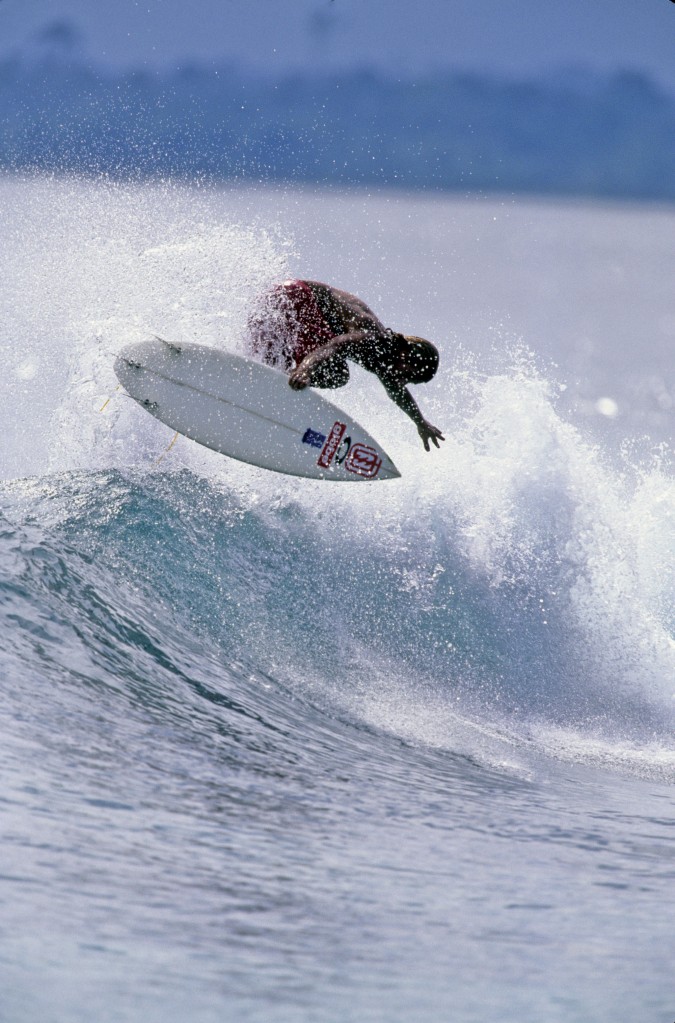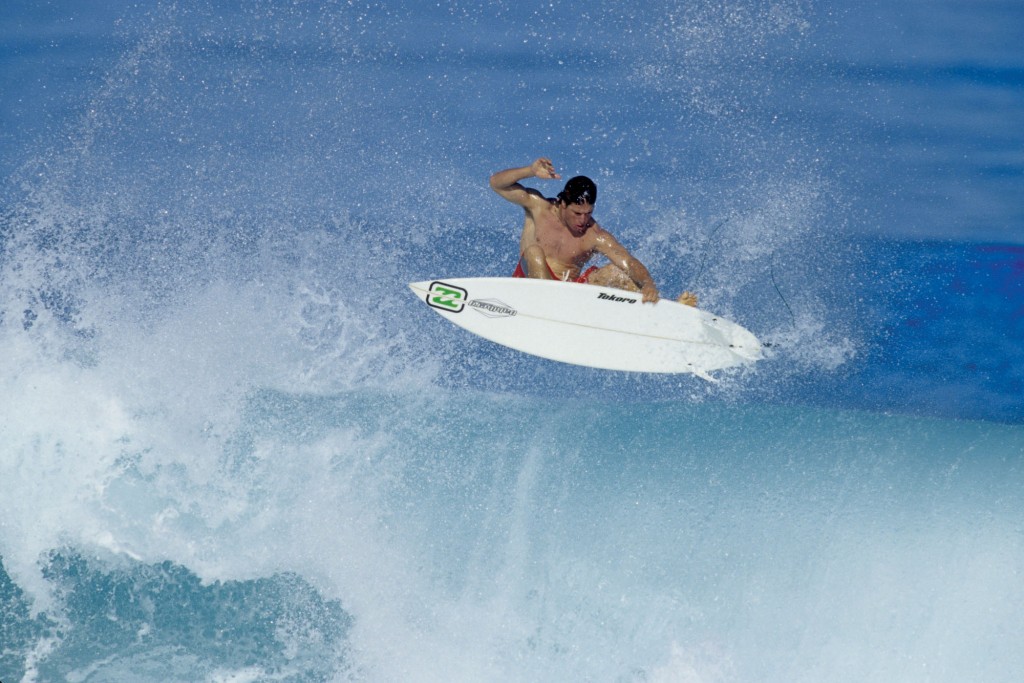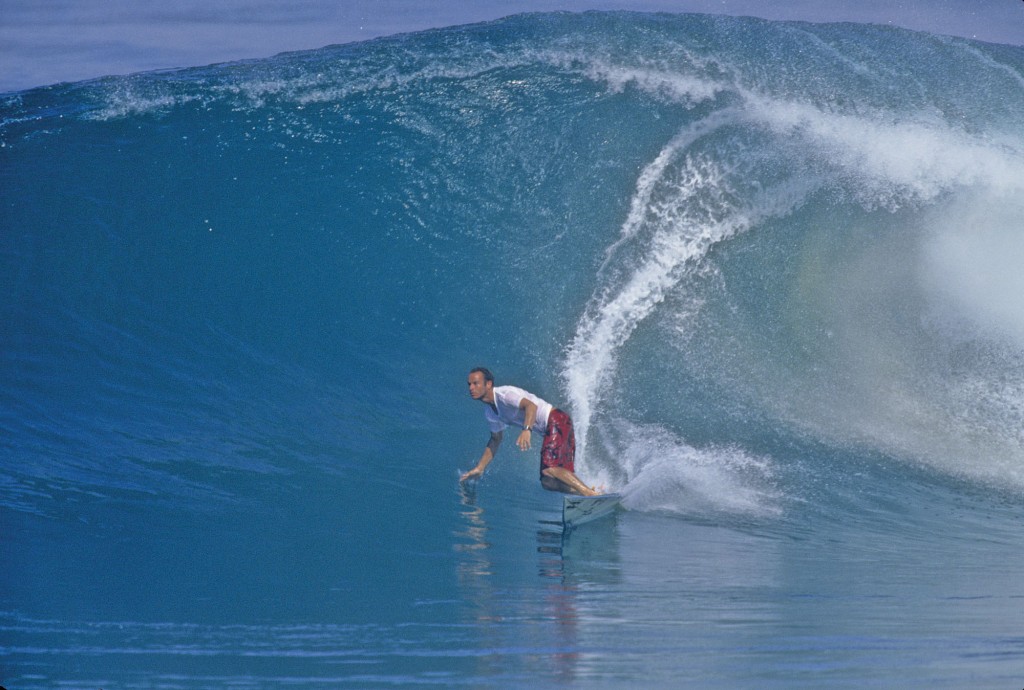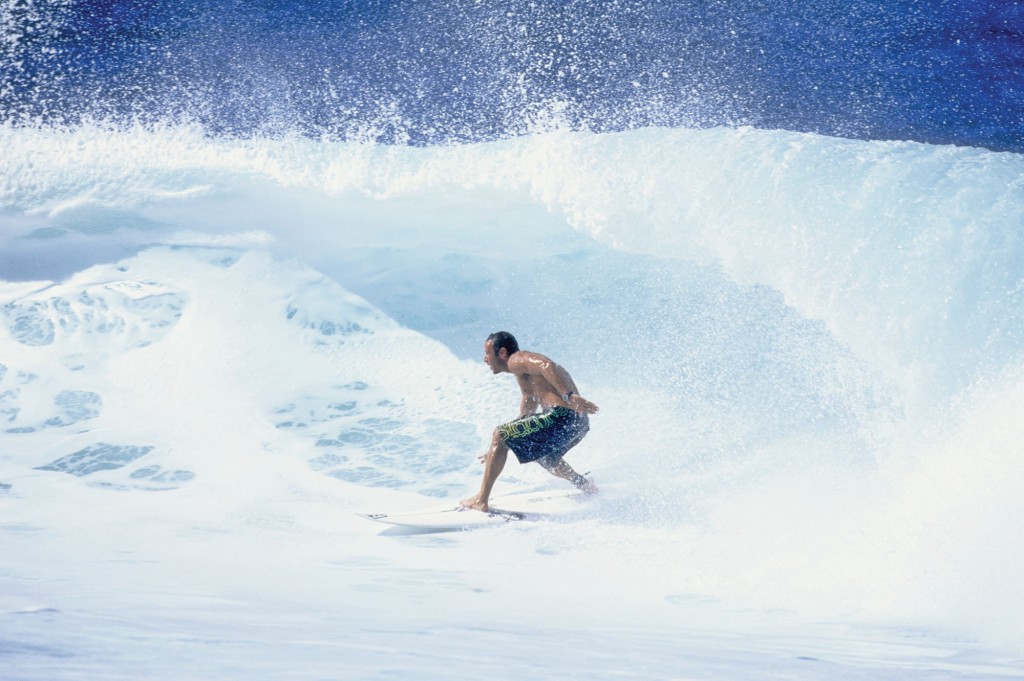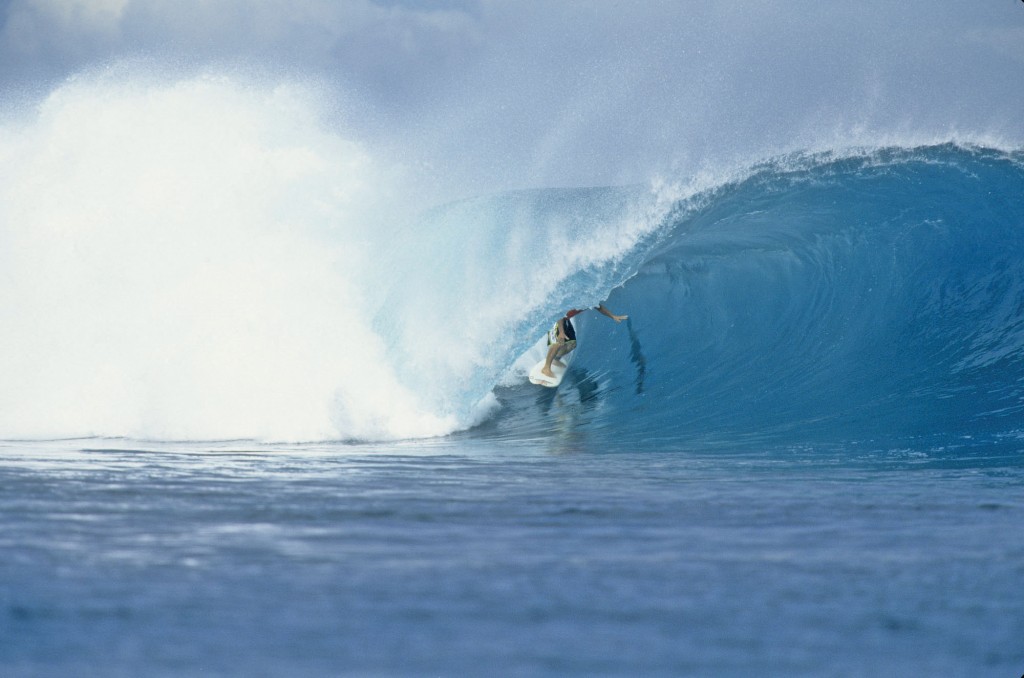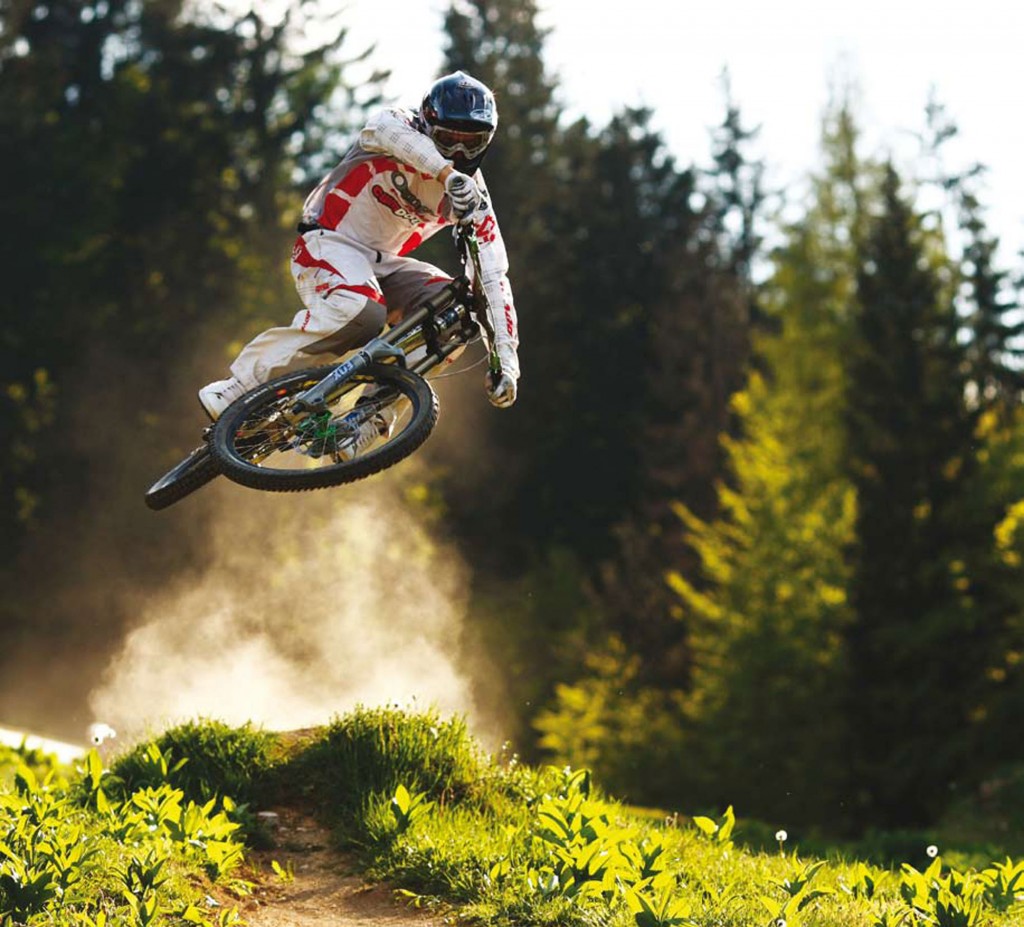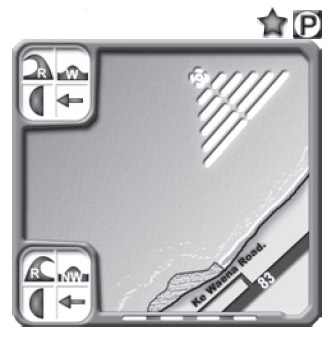Archive for December, 2011
Before you take off – the frontside punt
December 14th, 2011
THE FRONTSIDE PUNT
The Approach
Spying a perfect little launch section, approach with heaps of speed, and as you begin to move up the ramp shift most of your weight to your back foot, using your front foot to simply guide you up to the top of the wave. Maintain eye contact on the section you’re hoping to boost from. Drive through your bottom turn into a clean launch off the top and carry your momentum off the lip into the air. Your board needs to lay flat on the lip when you take off. The key here is to get up high. “To do that you need to drive your momentum off the top of the wave by pushing off the tail of your board,” explains Taj Burrow.
The Moment
Once you hit the section try to completely un-weight your board by springing above the lip. Continue to keep the weight off your board during the altitude climb, and at this point think about contracting your upper body towards your lower body – this will make you more compact and centered as you fly through the air. “As you get airborne, try and turn the nose of your board towards the beach by straightening out your back leg. Just stay above your board, and pull your knees up to your chest to stay in control and to stay stylish in the air. The wind coming towards you can really make a difference here,” continues Taj. “You’ve got to stay over the top of your board, and not lean back too far.” Consider applying a little pressure with your back foot to ensure that your flight path is spot on. If you feel like your board is going to get away from you, this is the time to grab the rail. There are all kinds of different variations you can do – double grabs, mute grabs and frontside grabs; almost anything you want. I don’t really plan it all out most the time. I just experiment and learn by feel.” As you reach the apex of the air you’re going to need to spot a landing zone. Staying focused on where you’re coming down is the key to sticking it.
The Recovery
The toughest part of flying is undoubtedly the landing, so make sure you’ve got yourself together as you start coming down. Be it a busted knee or a tweaked ankle, it’s really easy to get hurt landing airs, so don’t be afraid to bail out if you don’t feel right. If you do feel good, start coming down with weight evenly distributed and maybe just a bit more pressure on your back foot. “As I start to come back down I let go of my grab and check out the softest landing area, which is usually the whitewater,” tells Taj. “I try to extend my legs a little so my knees can absorb the impact.” Avoid the temptation to ‘stomp’ the move down because straight-legging it at this stage is a recipe for disaster. Negotiate the whitewash by quickly squaring up your shoulders over your board, and with knees bent and tucked firmly under your torso. From there it’s just a matter of not falling off.
Add Some Style
Parko adds: “Style is a lot more important today. It used to be guys would just throw it up into the air and let it fall where they may. But guys like Taj have made style an issue by doing it so well. There are two ways to add style, says Parko. First, use your knees as shock absorbers, and stay low to keep your center gravity and balance. And second, finish strong with more speed: connect as smoothly as possible, complete the wave, and continue to ride.”
This post was taken from Surfing The Manual: Advanced by Jim Kempton.

A barrel of fun – frontside tube riding distilled
December 9th, 2011
Peter Townend, the 1976 World Champ, likes to tell the story of Gerry Lopez giving him the secret of riding the tube: “I was a grommet at Coolangatta, surfing Kirra, and I could get into the barrel, but I couldn’t get out,” relates PT. “So Lopez showed up on the Gold Coast with Jeff Hakman and Jack McCoy.
Being the brazen little grom that I was, I walked straight up to him and introduced myself. I told him I’d been surfing Kirra and he was interested in going to try the tubes there. So I straight-up told him that I was having trouble getting out of the tube. ‘Let me tell you a little secret’, Lopez confided. ‘You see that big water pipe over there? The next time you’re in the tube and you are having trouble, take your front hand and point it directly in the center of the cylinder.’ I went back to Kirra that very next day, and every time I put my hand in the eye of the cylinder I started making it out of the tube!
It’ a simple tip, but I never forgot it.” The history of tube riding is a storied affair primarily built around the training ground of Banzai Pipeline, where nearly all surfing’s early barrel techniques were developed beginning with Butch Van Artdalen’s initial encounters in 1962, earning him the first title of Mr. Pipeline.
Jock Sutherland was next in a succession of regal pipe masters that was most epitomized in the early 70s by the zen-like grace of stylist Gerry Lopez. The torch was passed to Shaun Tomson in the winter of 1976, when new equipment and new vision allowed Tomson to actually begin maneuvering inside the tube at Backdoor.
The Pipeline Masters contest created a forum for performance that has crowned a number of heirs to the throne, including multi-time winners, Rory Russell, Larry Blair, Derek Ho, Tom Carroll, Kelly Slater and Andy Irons. For aspiring experts there’s no other place so sought after, and dreamed about than the tube. To ride in the barrel requires commitment, skill, and the ability to read the waves in instant detail. The punishment for errors is severe; the prize is communion with the very essence of the sport of surfing. It is estimated that only one in twenty surfers can confidently negotiate the tube. Here are some takes by the world’s best, to give an edge to the upcoming 5%.
1. SPEED
Surviving the barrel is all about speed; how to get it, and how to control it. To get deep in a barrel, you need to decelerate, but to get out, you need as much speed as you can get. Learning how to decelerate and accelerate will give you control of your tube ride and therefore allow you to get as deep as you can, and still get out.
2. SHOULDER IN
“The best trick I can remind tube riders to remember is to keep your lead shoulder in. It completely changes the body positioning. At this point you can make adjustments in the tube. The key is to make the negotiation between not getting too high (so that you get sucked up the face and over) and not getting too low (so that you lose your speed or get caught by the falling lip.) Both Mick Fanning and Joel Parkinson have developed a new approach which puts their weight on the front foot almost exclusively. Their back foot is turned over – the heel is rarely touching the deck. They put all their weight on the front foot and with today’s boards, the speed is built around weighting and unweighting.” Shaun Tomson, World Champion.
3. SETTING UP
Another important aspect is setting up the turn to position for the tube: Sometimes a hollow section will be coming a ways down the line and you will want to make a couple of quick pumps to position yourself right where you want to be as the lip pitches. If the tube comes up quickly, sometimes it is necessary to make a quick hook turn on the face, get your rail in, and duck quickly under the lip.
STEP BY STEP
1. TAKE-OFF
Barreling waves are steep waves. Barreling waves are fast waves. Therefore, paddle fast, and at an angle. You must take off right on the peak, dropping down the face. Depending on how fast the wave is, you need to decide where to bottom turn. On fast waves like Pipe, you’ll drop to the bottom with no chance of engaging a fin. You must get the fin in as soon as possible.
2. BOTTOM TURN
This step is crucial. Too late and you’ll lose speed or find yourself outside the curtain. Too soon and you out-run the lip and have to stall to get back in. When you start your bottom turn, keep the knees bent like a coiled spring, and point your head in the direction you want to go next (back up the face). In small waves, now is the moment to make yourself small, to avoid decapitation.
3. PULLING IN
This is the moment of truth, when you must get yourself into the right part of the wave. You need to be half way between the top and the bottom of the wave. Too high and you get your neck chopped by the lip. Too low and you will be drilled. Use your back foot toes to engage the fin for more height. Release the toes and weight the front foot to drop back down the face. The key success factor for this: keep the high line as long as possible; height = speed, and speed = a safe exit.
4. SPEED
Surviving the barrel is all about speed; how to get it, and how to control it. To get deep in a barrel, you need to decelerate, but to get out, you need as much speed as you can get! Learning how to decelerate and accelerate will give you control of your tube ride and therefore allow you to get as deep as you can, and still get out the end.
5. DECELERATION
To get deeper, decelerate. Hand-dragging is the most effective way to lose speed when there is little room for maneuver. Stick your back hand into the wave… Not too sharply or you are gone! Weight shifting is the cleanest but slowest way to lose speed. Rock back onto your back foot. This brings the nose up and de planes the board, creating drag. Some small s-turns or wiggling; will slow your progress and allow the lip to catch up. This is hard to do in small tubes where you are crouched over the board.
6.THE RIDE
Staying with the lip is all about control. Accelerate and decelerate to keep you in the slot, using the techniques in step 5. Hold your line no matter what.
7. EXIT STRATEGY
You need to use all that speed you banked earlier and enough height to allow a sharp acceleration. Here are some tips on how to get the speed you need to exit:
Put weight on the front foot to reduce drag.
Rock back and forth while applying, and releasing, back-toe pressure. This engages then releases the fins and literally “squeezes” speed out of the board.
Keep low and tight; loose arms and heads create drag, and add to the risk of lip chop.
If you look at the exit, you will go through the exit! If you look at the roof, you will go through the roof. If you look at the board, you will drop too low.
This post was taken from Surfing The Manual: Advanced by Jim Kempton.

Scrubs – five tips to scrubbing a jump with a sam hill
December 5th, 2011
A modified whip and a recent addition to all top riders’ jumping arsenal is the scrub. Following on from the trademark trick of motocross legend James ‘Bubba’ Stewart, the scrub is all about being able to hit jumps flat out without catching much air by absorbing the kick.
Get these nailed and you’ll be able to hit any lip full throttle without losing any speed.
FIVE TIPS TO SCRUBBING A JUMP WITH SAM HILL
1. Approach the lip as fast as you feel comfortable.
2. Set yourself up in the middle of the bike ready for take-off.
3. Lean the bike slightly to one side as you are heading up the crest. This will take a lot of commitment.
4. When your front wheel is at the top of the crest, turn the handlebars down to the same side your bike was slightly leaned to and flatten the bike underneath you. The lean in the air should be an extension of the turn you started on the ground.
5. Straighten the bike up for landing using your arms and legs and stay focused on the next section of the track.
This post was taken from: Mountain Biking The Manual by Chris Ball
Spot of the Week: Banzai Pipeline, Hawaii
December 1st, 2011
It’s one of surfing’s longest running traditions that the final (and often world title-deciding) round of the ASP world tour is held at the awe-inspiring Pipeline. This year the final round of the Triple Crown series, the Billabong Pipe Masters takes place during the waiting period from 8th to 20th December.
In the run up to the event we take a look at the famous wave:
At the Southern end of Ehukai Beach Park. Going North from Waimea about 2 miles, small alley on left before Sunset Beach Elementary.
Pipeline; Probably the squarest barrel on earth. ..when it’s on. Pipe needs trades, and the right swell (W to NW at 4 – 25ft) to work properly.
Take one of these away and you can have a shapeless, punishing mess. The rule of thumb is; the more west the swell, the heavier and hollower the wave.
Pipeline is a series of 3 reefs working from the inside to the outside as the swell increases. First Reef: At 4 ft, you can have the
most perfect barrels followed by a short whack-able section here. The crowds at this size will frustrate, and the dropping in is blatant.
The wave is so close to the beach that spectators can get closer to the action than any other surf spot. At 6-8ft, the peak appears close to dry
sucking off the reef, and the drop is a free-fall. A mistake could see you jammed into a crack in the lava reef, but successful riders will make the
bottom turn, and stand tall in a super-wide almond shaped barrel. Then it’s a speed-race out onto the shoulder, which eventually tapers into a sandy channel.
Second Reef: From 10 or 12 ft plus, another crop of lava pushes up bombs another 100 yards out to sea. These can be mountainous
jacking peaks which reform on first reef giving 2 rides in 1. Take-offs here are more critical than any wave anywhere. Timing, commitment
and a heavy board are essential to manoeuvre into the elusive time-space window between being pushed over the back by the gusty winds
funneling up the face, and too-late drops straight to the bottom. The entire length of the wave is a full-power situation, with the lip ready to cut a surfer
down at any moment, and even the latter half of the ride can produce truck-sized barrels.
There’s anoccasional 3rd reef too, for monsters up to a much contested 30 feet. Now a tow-in domain, and quite rare to see it perfect.
Paddle-out fast, West of Backdoor. Current will sweep you East of the peak into the channel. Crowds to the extreme. Drop-ins are
the rule not the exception. Frustrated caged battery-chicken surfing. Experts only.
Backdoor: The right off the same peak as first reef, is an equally if not more heavy tube machine, with even more shallow reef and
rocks to contend with. Backdoor tubes often end in shut-down or dry-suck, and the successful surfer will make speed his friend. No
time for turns here. Works on similar swells, although likes more North than Pipe itself. Too much West in the swell, or too much
size, and it will be a dangerous close-out. From 3 to 10 ft. Crowded to the extreme. Drop-ins from body-boarders and surfers better than you.
Shallow reef with deep cracks to get stuck in. Current. Thick guillotine lips.Both these waves have claimed lives, and may be best experienced
vicariously. Try to catch them early or late season or you may not get a single wave. If you want expert tuition to help get your confidence up
(or are prepared to admit that you need some lessons), The Hawaii Surf School is based on the North Shore, on 808 638 7845. Beccy Benson and
her team of pros will hone your skills whatever your level.
